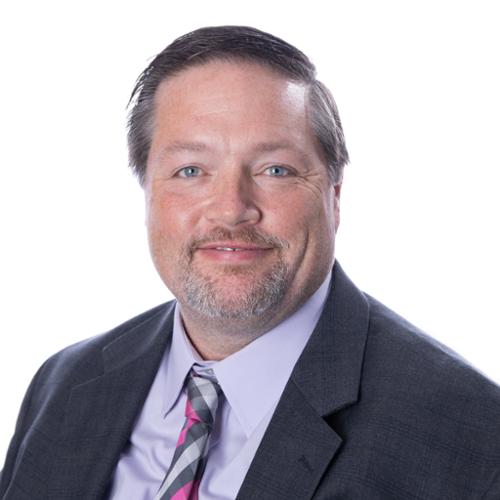Inside the 2025 Residency Match: What Physician Recruiters Need to Know About This Record-Breaking Year
Inside the 2025 Residency Match: What Physician Recruiters Need to Know About This Record-Breaking Year
The 2025 Residency Match has officially gone down as the largest and most competitive in U.S. history. According to the National Resident Matching Program (NRMP), 43,237 residency positions were offered this year—a 4.2% increase over 2024. In parallel, more than 52,000 applicants registered for the Match, making 2025 a record-setting year for both available slots and demand.

For physician recruiters, these numbers provide more than a snapshot of academic activity—they offer critical insights into future workforce supply, specialty interest trends, and emerging recruitment opportunities.
This article unpacks the most important takeaways from the 2025 Match and what they mean for hiring strategies moving forward.
Key Residency Match 2025 Statistics
-
Residency positions offered: 43,237 (an all-time high)
-
Applicants registered: Over 52,000
-
PGY-1 fill rate: 94.1%
-
Overall PGY-1 match rate for all applicants: 79.8%
-
Match rate for U.S. MD and DO seniors: Approximately 93–94%
These numbers show that while most U.S. medical school seniors matched successfully, a growing applicant pool—driven by increased medical school enrollment and international graduates—continues to heighten the competition for residency positions.
Emergency Medicine Sees a Remarkable Rebound
Perhaps the most notable specialty trend in 2025 was the recovery of Emergency Medicine, which filled 97.9% of its positions, up significantly from the alarming 81.8% fill rate in 2023. This resurgence follows widespread concern about the specialty’s future, which had seen declining interest amid burnout fears and changing work expectations.
Recruiters should note that Emergency Medicine’s rebound signals renewed candidate confidence in the specialty—possibly driven by stabilization in ED volumes post-COVID, compensation adjustments, and new models for sustainable shift work.
OB/GYN and Other Competitive Specialties Maintain Strong Fill Rates
The OB/GYN specialty also posted an impressive 99% fill rate, with just 10 positions unfilled nationwide. This continues a trend of strong interest in women’s health, bolstered by increased public attention to reproductive care access and women’s health policy changes.
Other consistently competitive specialties, such as Dermatology, Radiology, and Orthopedics, also maintained high fill rates, though specific year-over-year shifts in interest are worth tracking.
Recruiter Tip: Prioritize outreach in specialties with high match rates and rising applicant interest. Early career physicians in these fields are likely to be more in-demand—and more discerning—when selecting their first positions.
More Graduates, More Match Pressure
As U.S. medical school enrollment continues to grow (approaching 100,000 enrolled students in 2025), the bottleneck at the residency level remains a challenge. Though the number of positions has increased, it hasn’t kept pace with the expanding pool of medical graduates, including U.S. MDs, DOs, and International Medical Graduates (IMGs).
For recruiters, this means:
-
The competition for residency slots remains intense
-
U.S. graduates are still successfully matching at high rates, but some qualified candidates will remain unmatched
-
Access to early-career physicians may improve slightly over the next few years—but only if GME funding continues to expand
Practical Implications for Physician Recruiters
1. Start Engagement Before Graduation
With over 52,000 candidates in the 2025 Match cycle, the competition to recruit top new physicians will only grow. Physicians matched in 2025 will enter the workforce in 2028 or beyond, depending on specialty.
Recruiter Strategy: Build brand awareness among students and residents now. Attend career fairs, sponsor education events, and maintain a presence in online spaces where early-career physicians gather.
2. Track Specialty Trends to Forecast Hiring Needs
Match data helps predict which specialties will produce more candidates in the near future. Rising fill rates in Emergency Medicine and OB/GYN, for example, may ease supply in those fields, while lower fill rates in others could signal growing shortages.
Recruiter Strategy: Adjust sourcing and outreach efforts based on specialty-specific match performance. Focus on pipeline development for specialties with high demand but lagging interest.
3. Leverage Match Data to Build Stronger Pipelines
The data from Match Day 2025 should inform your long-term recruitment strategy. Specialty fill rates, applicant volumes, and geographic trends offer valuable insights into where—and when—your recruitment efforts will have the most impact.
Recruiter Strategy: Use insights from the Match to identify target specialties, partner with key residency programs, and customize messaging to match new physician expectations and preferences.
The 2025 Match Signals Progress—but the Pipeline Still Needs Support
While the record number of positions and high match rates for U.S. seniors are encouraging, the underlying imbalance between graduate output and training capacity remains unresolved. Unless residency slots continue to expand in lockstep with medical school enrollment, physician supply constraints may persist—particularly in high-need and underserved specialties.
Recruiters should view this year’s Match not just as a milestone, but as a call to action to:
-
Advocate for additional GME funding
-
Plan proactively for upcoming hiring surges
-
Deepen relationships with residency programs and early-career physicians
Plan Ahead with PracticeMatch
PracticeMatch helps physician recruiters align their efforts with the evolving medical training landscape. We provide:
-
Access to over 70% of graduating residents and fellows annually
-
Tools to source candidates by specialty, year, and location
-
Outreach campaigns to engage early-career talent
-
Career fair events and digital marketing services to build your employer brand
Explore our solutions at: www.practicematch.com/employers

Clint Rosser is the CEO of PracticeMatch. He has been with PracticeMatch since 2016. He has overseen several departments within PracticeMatch including Inside Sales, Career Fairs, and the Client Services team. Clint, along with his team, has helped elevate PracticeMatch client services to move past a transactional vendor relationship to a full partnership with clients. This has allowed PracticeMatch to build stronger relationships and work with clients closer to ensure they can achieve the most ROI possible.
Prior to Joining PracticeMatch, Clint has been in Client service leadership roles for over 20 years. Clint serves as an AAPPR Board Member for Strategic Corporate Sponsors.
References:
https://www.nrmp.org/match-data/2025/02/results-and-data-specialties-matching-service-2025-appointment-year/